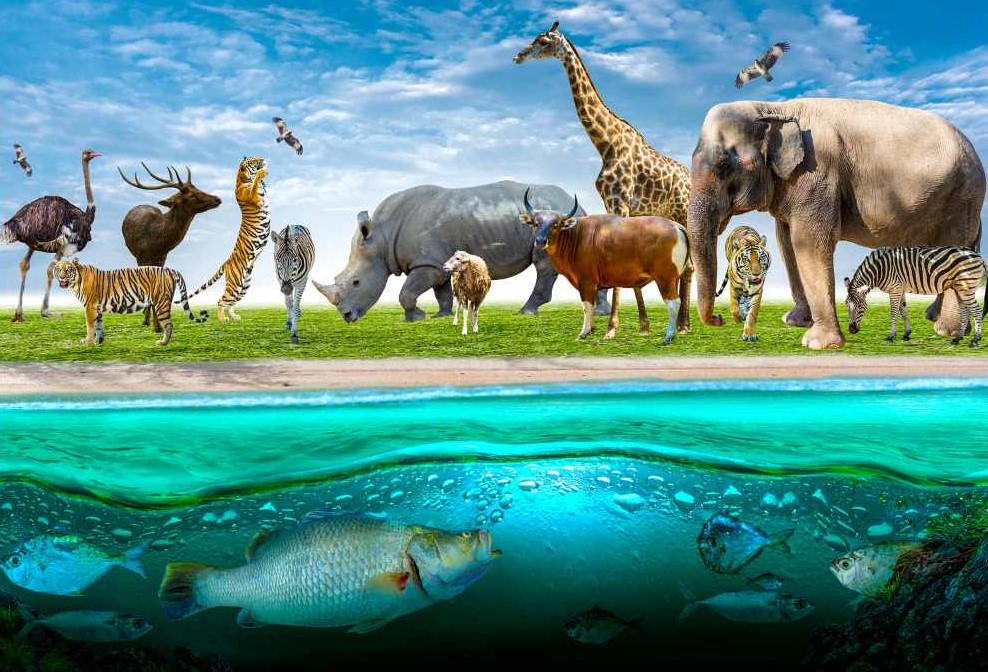Animals by Categories
Table of Contents
Introduction (Animals by Categories)
Understanding animals is a fascinating journey that takes us into the diverse realms of the animal kingdom. From mammals to insects, each category offers a unique glimpse into the intricate web of life on Earth.
Why Do We Group Animals by Categories?
Categorizing animals serves as a fundamental tool for scientists, conservationists, and enthusiasts alike. It provides a systematic approach to studying and preserving the incredible biodiversity that surrounds us. By delving into the various categories, we unlock a treasure trove of knowledge that aids in research, conservation efforts, and even our everyday interactions with the animal kingdom.
Mammals: A Diverse Group
What defines mammals?
Mammals, with their distinct characteristics such as fur, warm-bloodedness, and live births, represent a vast and varied group. From the majestic elephants to the playful dolphins, mammals captivate us with their diversity.
Birds: Feathered Wonders
The unique features of birds
Birds, with their feathered glory and remarkable adaptability, grace our skies and contribute to the ecological balance. From soaring eagles to tiny hummingbirds, each bird species plays a vital role in maintaining the delicate harmony of our ecosystems.
Reptiles: Cold-Blooded Marvels
Traits of reptiles
Reptiles, often misunderstood, showcase remarkable adaptations. From the powerful crocodile to the agile chameleon, reptiles contribute to the intricate tapestry of life on land and in water.
Amphibians: Masters of Adaptation
The dual life of amphibians
Amphibians navigate both aquatic and terrestrial worlds, embodying adaptability. Frogs, salamanders, and newts demonstrate the beauty of life in the transition zones between water and land.
Fish: Life Beneath the Surface
The aquatic world of fish
Dive into the depths of oceans and rivers to explore the breathtaking diversity of fish. From vibrant coral reef dwellers to deep-sea wonders, fish showcase the wonders of underwater life.
Insects: Tiny Wonders
The incredible world of insects
Insects, despite their small size, wield tremendous influence in ecosystems. Bees pollinate flowers, ants build intricate colonies, and butterflies enchant us with their delicate beauty.
Invertebrates: The Backbone of Biodiversity
The often-overlooked world of invertebrates
Invertebrates, encompassing a vast array of creatures like spiders, snails, and jellyfish, form the backbone of biodiversity. Their roles in nutrient cycling and ecosystem balance are indispensable.
Endangered Species: The Urgency of Conservation
The threat to various animal categories
As human activities impact natural habitats, numerous species face the risk of extinction. Conservation efforts are crucial to preserving the delicate balance within each animal category, from the largest mammals to the tiniest insects.
Human-Animal Bond: Beyond Categories
The emotional connection with animals
Our connection with animals goes beyond scientific categories. Whether as pets or wildlife, animals evoke emotions, teach us empathy, and enrich our lives in ways that transcend mere classification.
Pets: Our Furry Companions
The special relationship with domesticated animals
Domesticated animals, our cherished pets, bring joy, companionship, and unconditional love. From loyal dogs to independent cats, the bond between humans and pets transcends species distinctions.
Animal Welfare: A Shared Responsibility
The ethical considerations of categorizing animals
Categorizing animals comes with ethical responsibilities. As stewards of the planet, we must ensure the well-being of all creatures, considering their specific needs and promoting humane treatment across categories.
Future Trends in Animal Categorization
Emerging technologies and methodologies
Advancements in technology, including DNA analysis and artificial intelligence, are revolutionizing the field of animal categorization. These innovations promise deeper insights into the relationships between species and open new avenues for conservation.
Conclusion
In unraveling the intricacies of animal categorization, we gain a profound appreciation for the rich tapestry of life on Earth. From the smallest invertebrates to the largest mammals, each category contributes to the balance of our ecosystems. As we marvel at the wonders of the animal kingdom, let us also recognize our shared responsibility to protect and preserve this biodiversity for future generations.
FAQs
- Why Do We Group Animals by Categories?
- Categorizing animals is crucial for scientific research, conservation efforts, and understanding the intricate web of life on Earth.
- What role do endangered species play in ecosystems?
- Endangered species play a vital role in maintaining ecological balance, and their preservation is essential for overall biodiversity.
- How can individuals contribute to animal welfare?
- Individuals can contribute by supporting conservation initiatives, adopting sustainable practices, and promoting the humane treatment of animals.
- What are the challenges in categorizing invertebrates?
- Categorizing invertebrates can be challenging due to their vast diversity and often subtle morphological differences.
- How do emerging technologies impact animal categorization?
- Emerging technologies, such as DNA analysis and AI, provide advanced tools for more accurate and detailed animal categorization.
